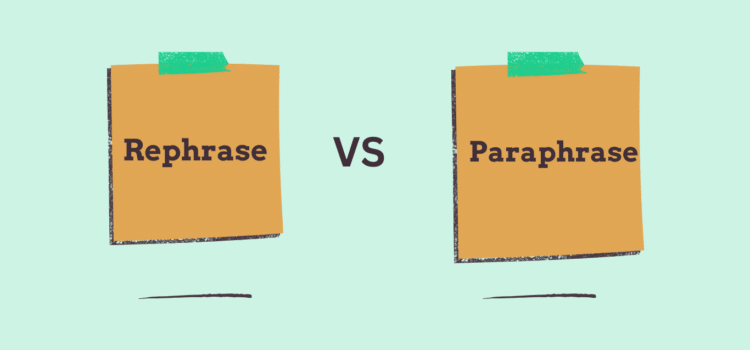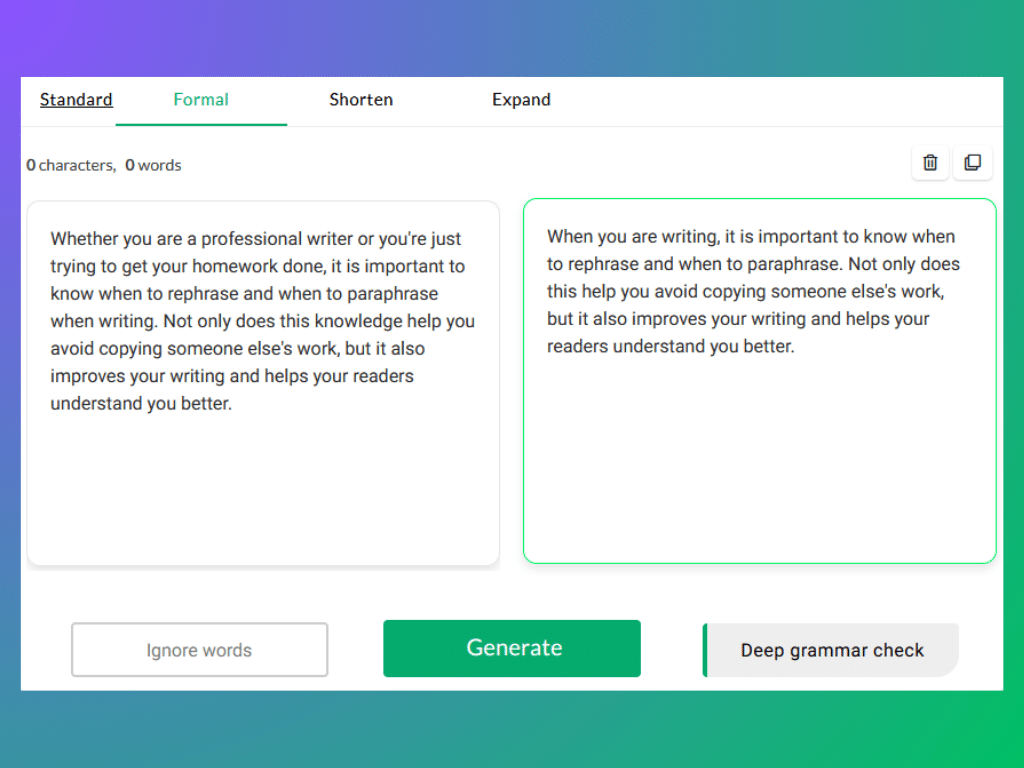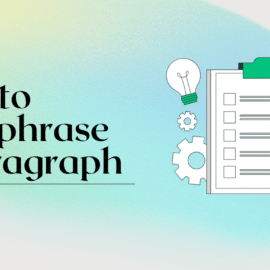
This article will tell you everything you need to know about rephrase Vs paraphrase, including their differences, similarities, and how to employ them.
Rephrasing is rewriting a text for better clarity and comprehension. It is a writing technique that expresses an idea using different words, phrasing, and sentence structure. It is used when the original text is repetitive, ambiguous, or difficult to understand.
Paraphrasing means sharing another person’s words without including your thoughts, opinions or excluding theirs. It means altering someone else’s words the way you understand them. It involves changing the words in a text without altering their original meaning.
When to use Rephrasing as a Writing Technique
When avoiding repetition. Rephrasing can be employed when a writer wants to avoid using the same word multiple times in a text. Repeating words and phrases make a piece of content monotonous and boring. Hence, rephrasing words/sentences is an easy way to maintain reader engagement and create a positive user experience.
To improve clarity. Sometimes, a text may be grammatically accurate but fail to pass its intended message. Switching up words in the sentences helps the writer pass the message effectively and improves readers’ understanding.
To get rid of jargon. Some content pieces, like academic or technical writings, require technical terms that may be difficult for an average reader to understand. Rephrasing helps simplify these complex languages and makes the content more consumable to readers.
Common mistakes to avoid while rephrasing.
- Redundancies
For example: “The book was very interesting”
Rephrased text: “The book was interesting to read“
- Changing the original meaning of the content
For example: “Research indicates that there is a correlation between sugar consumption and diabetes”
Rephrased text: “Studies show that sugar consumption causes diabetes”
When to use Paraphrasing as a Writing Technique
When creating original content. To avoid plagiarizing already-existing content, writers use paraphrasing. By paraphrasing a text, writers can create original content based on someone else’s work while still acknowledging the original source,
When summarizing a text. Paraphrasing makes it easier to compress large blocks of complex ideas into smaller, more straightforward, and digestible sentences. This is especially useful in academic writing.
Common mistakes to avoid while paraphrasing
- Unnecessary use of synonyms
- Failure to give proper acknowledgements to the original source of the content
- Altering the meaning of the text and, inadvertently, the message the writer was trying to pass.
- Retaining too much of the original text would indicate plagiarism.
- Rewriting the text with the same sentence structure as the original text.
Similarities
Although paraphrasing and rephrasing are distinctively different, they are similar writing techniques. Most of these similarities lie in the strategies employed to make them work.
Both paraphrasing and rephrasing involve using synonyms and changing sentence structures. They both require a vast vocabulary on the reader’s part and the ability to switch content tones and styles while retaining the main idea of a piece of text.
Differences
The major difference between rephrasing and paraphrasing is in their overall objective. Rephrasing focuses on improving a sentence’s meaning and making it easier to understand. In comparison, the sole aim of paraphrasing is to avoid plagiarism.
Pros and Cons
- Rephrasing can help you or your readers gain clarity since it entails expressing a thought in a different way.
- We all know communication is a two-way street. What’s the essence of writing if your readers cannot understand or resonate with your content? Rephrasing simplifies complex language, thus improving communication.
- Regardless of how simple rewriting a text may seem, it can become rocket science if you do not understand the subject matter. Also, it can be a time-consuming process.
- Paraphrasing helps writers avoid plagiarism. Simply put, it provides them with a means of infusing originality into existing work.
The Best Online Tools
When it comes to paraphrasing and rephrasing content, our free rewording tool serves as a valuable resource for individuals aiming to enhance the originality and clarity of their written work. What makes this tool even more appealing is its user-friendly nature, catering to both beginners and experienced writers alike. By employing advanced algorithms, it generates alternative versions of sentences or passages, effectively sidestepping plagiarism while maintaining the core meaning intact.

With RewriteTool.net, transforming your content into a captivating and polished piece becomes effortless, without any compromise on quality. That’s why it has become the go-to choice for many authors seeking efficient ways to improve their work.
Conclusion
Whether you are a professional writer or you’re just trying to get your homework done, it is important to know when to rephrase and when to paraphrase when writing. Not only does this knowledge help you avoid copying someone else’s work, but it also improves your writing and helps your readers understand you better.
Have you used any of the tools mentioned in this article? What do you think about them? Leave a comment.
Other Helpful Resources:
- Rephrase meaning and synonyms
- Paraphrase definition
- When to paraphrase or to quote
- The different types of paraphrasing
- The best paraphrasing tools and applications


